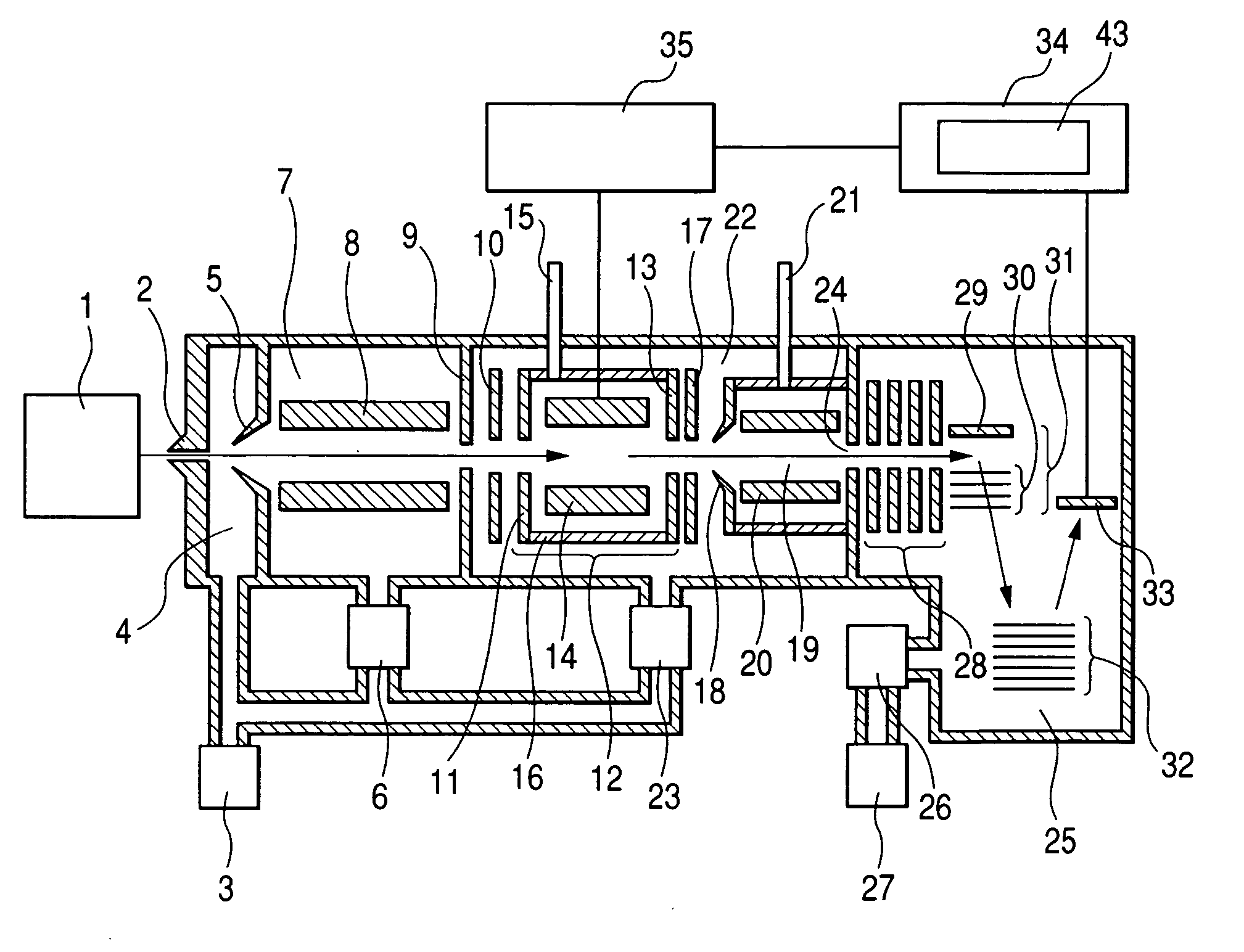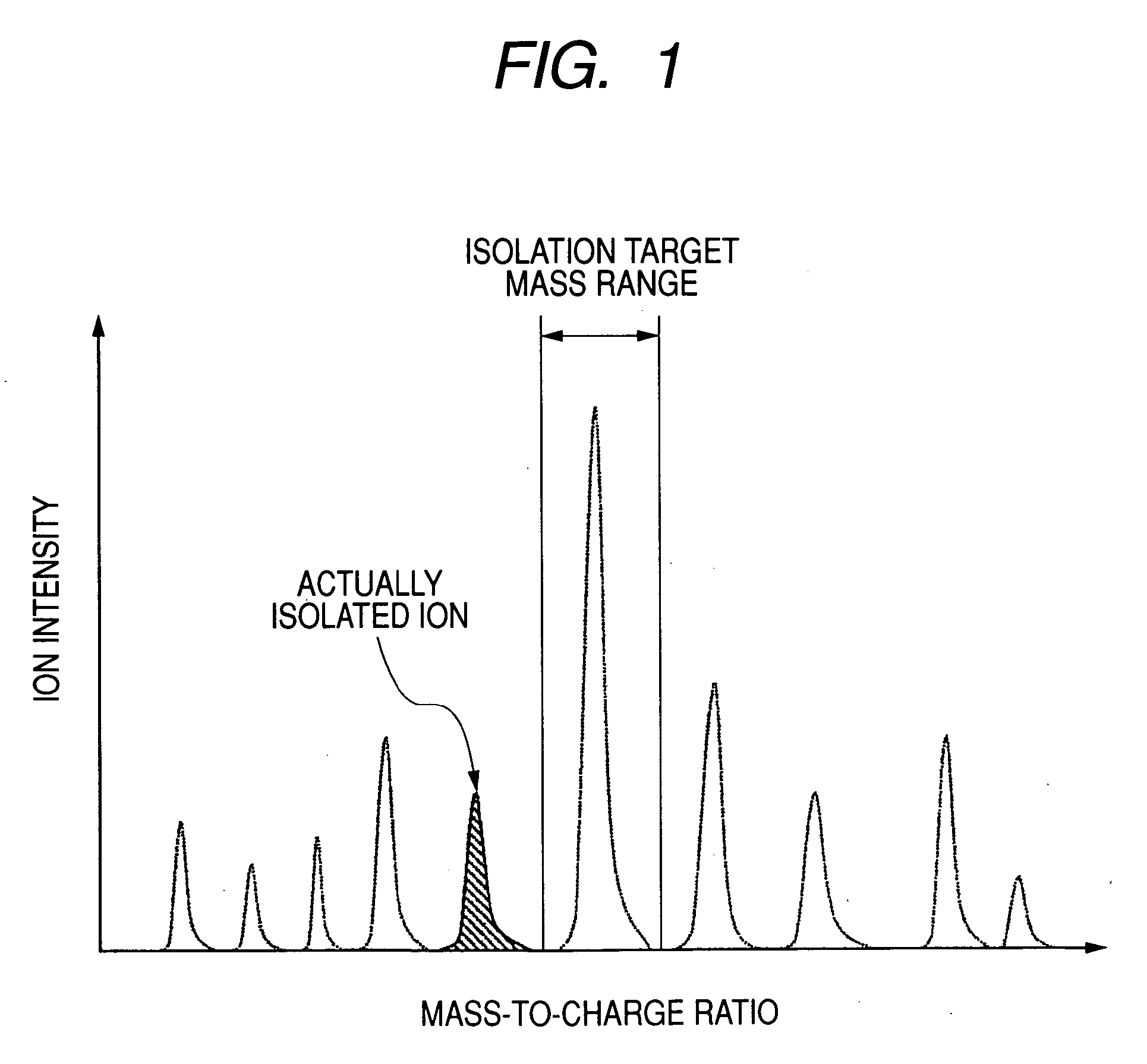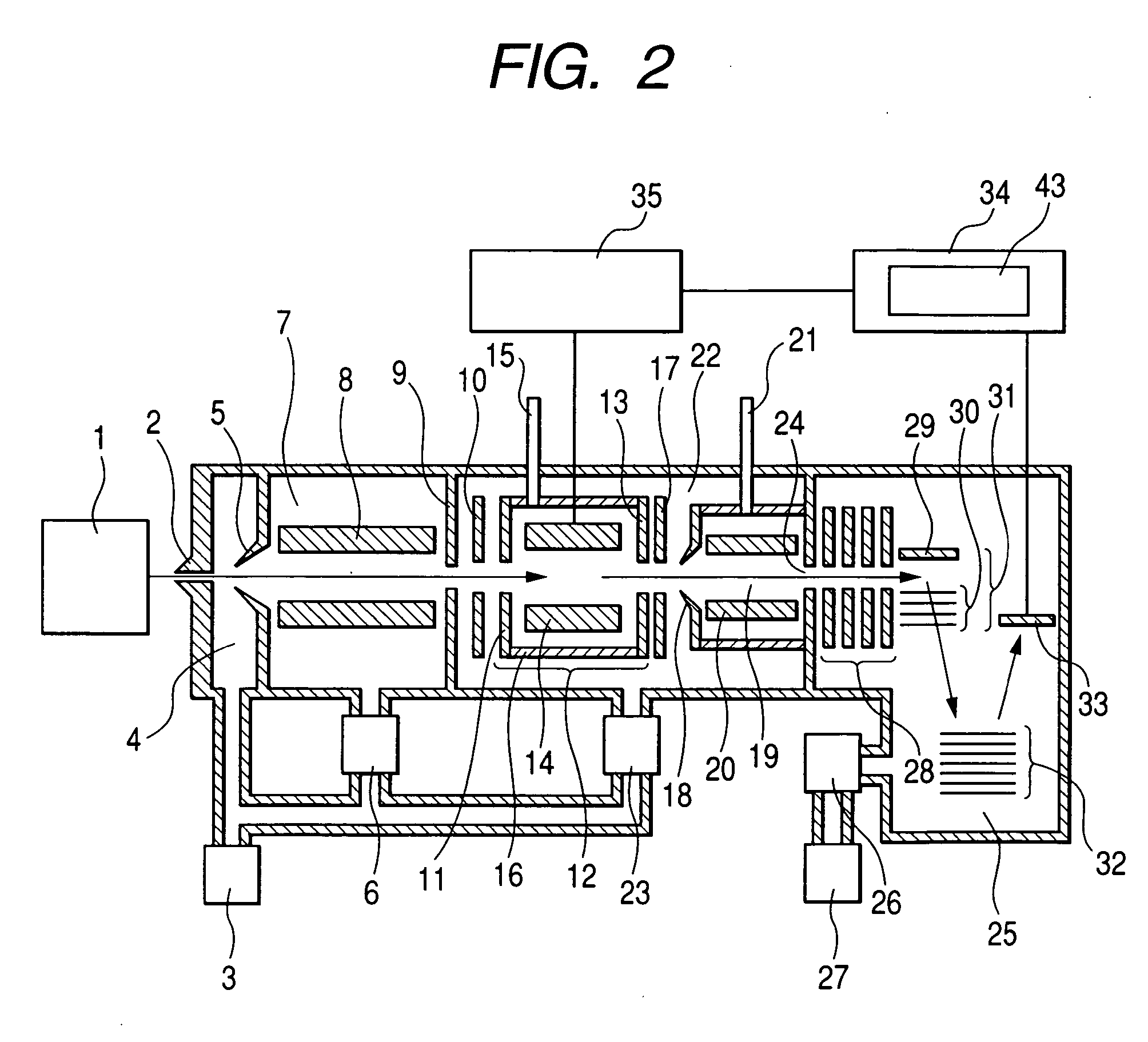Mass spectrometer
a mass spectrometer and mass spectrometer technology, applied in the direction of isotope separation, electric discharge tube, particle separator tube, etc., can solve the problems of reduced sensitivity, reduced ion detection sensitivity and/or ion selectivity, and reduced accumulation efficiency, etc., to achieve high ion selectivity and high sensitivity analysis
- Summary
- Abstract
- Description
- Claims
- Application Information
AI Technical Summary
Benefits of technology
Problems solved by technology
Method used
Image
Examples
first embodiment
[0033]FIG. 2 is a block diagram illustrating the quadrupole linear ion trap time-of-flight mass spectrometer according to the present invention.
[0034] Ions produced in the ion source 1 are moved through the aperture 2 and introduced into the first differential pumping region 4 where exhaust is made to maintain 100-500 Pa by the rotary pump 3. Then, ions are moved through the aperture 5 and introduced into the second differential pumping region 7 where exhaust is effected by the turbo molecular pump 6. The second differential pumping region 7 is provided with the multipole electrode 8 and is maintained at a pressure of about 0.3-3 Pa. To the multipole electrode 8, an alternately phase-reversing frequency of about 1 MHz and a RF voltage with voltage amplitude of several hundred volts are applied. Ions are converged to near the center axis within the multipole electrode 8 for highly efficient transport.
[0035] The ions converged in the multipole electrode 8 are led through the apertur...
second embodiment
[0069]FIG. 12 shows a block diagram of the quadrupole linear ion trap mass spectrometer according to the present invention.
[0070] The ions produced in the ion source 1 are led through the aperture 2 into the first differential pumping region 4 from which air is exhausted by the rotary pump 3 to a pressure of about 100-500 Pa. Then, the ions proceed through the aperture 5 and into the second differential pumping region 7 which is exhausted by the turbo molecular pump 6. The second differential pumping region 7 is provided with the multipole electrode 8 and is maintained at a pressure of about 0.3-3 Pa. To the multipole electrode 8, the alternately phase-reversing frequency of about 1 MHz and the RF voltage with the voltage amplitude of several hundred volts are applied. In the multipole electrode 8, the ions are converged to around the center axis for highly efficient transport.
[0071] The ions converged by the multipole electrode 8 are led through the aperture 9, and the holes of t...
third embodiment
[0084] In a similar configuration to what is shown in FIG. 12, an embodiment or the third embodiment which employs a system different from the second embodiment is explained by using the operational sequence diagram of FIG. 15. The operational sequence diagram of FIG. 15 represents the performance of MS2 analysis. In MS2 analysis, the linear ion trap 12 conducts ion accumulation and ejection in the advance analysis process; conducts ion accumulation and ejection in MS1 analysis, viz., the first mass spectrometry process; and further conducts ion accumulation, isolation, dissociation, and ejection in MS2 analysis, viz., the second mass analysis process. What is different from the operational sequence diagram of FIG. 13 is that no advance analysis exists.
[0085] As explained for the second embodiment, in the ion ejection period, the mass spectrometry is conducted by scanning of the RF voltage and the supplemental AC voltage. Under the influence of space charge that may be caused there...
PUM
 Login to View More
Login to View More Abstract
Description
Claims
Application Information
 Login to View More
Login to View More - R&D
- Intellectual Property
- Life Sciences
- Materials
- Tech Scout
- Unparalleled Data Quality
- Higher Quality Content
- 60% Fewer Hallucinations
Browse by: Latest US Patents, China's latest patents, Technical Efficacy Thesaurus, Application Domain, Technology Topic, Popular Technical Reports.
© 2025 PatSnap. All rights reserved.Legal|Privacy policy|Modern Slavery Act Transparency Statement|Sitemap|About US| Contact US: help@patsnap.com



